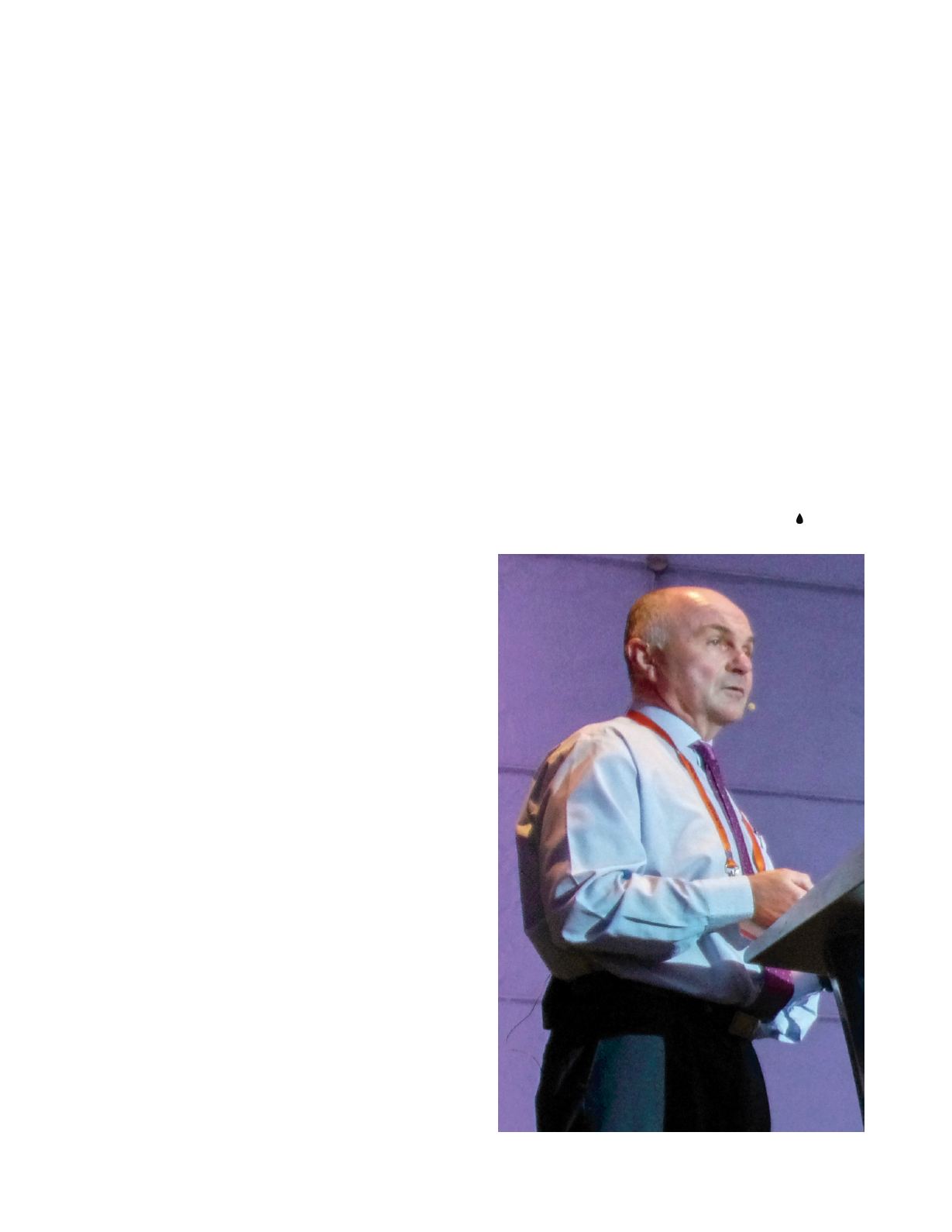
39
Fuels & Lubes International Quarter Three 2015
FUEL ECONOMY GAINS
Optimised polymers can translate to significant gains
in fuel economy, as Torsten Stoehr, global product
manager for driveline and industrial gear fluids, Evonik
Oil Additives, showed. He spoke on dispersant and non-
dispersant comb polymers and their advantage over
conventional PAMA (poly alkyl methacrylate). Using
correctly formulated comb polymers can offer a 3 to
4% gain in fuel economy, if improvements in the engine
oil, automatic transmission fluid (ATF) and axle oil are
combined, he said. A comb polymer has a main backbone
with several linear side chains; these optimised combs
have enhanced ability to collapse and expand.
In a chassis dynamometer test of fuel economy
in automatic transmission fluids (ATF), Evonik
demonstrated that comb polymers have a significant
advantage over conventional PAMA in terms of fuel
consumption. In each section of the New European
Driving Cycle (NEDC) and the Japanese driving cycle
JC08, a 6.0 cSt ATF formulated with a comb polymer
consumed less fuel than a 6.0 cSt ATF formulated
with a conventional PAMA, with up to a 1.2% overall
advantage in the NEDC. A 4.5 cSt ATF with comb
polymer was also tested, and while it offered lower
fuel consumption in most of the NEDC, it consumed
more than the 6.0 cSt ATF with comb polymer during
the extra-urban portion. Overall, in the “warmer” and
thus more challenging JC08, the 4.5 cSt ATF with comb
polymer actually consumed 0.1% more fuel than the
conventional PAMA, whereas the 6.0 cSt formulation
with the comb again offered a 0.5% fuel economy
advantage.
“We cannot at all recommend going to a 4.5 cSt
viscosity level,” Stoehr said, because during the
extra-urban driving portion of the NEDC and most of
the JC08, it was pushed into mixed lubrication, which
meant increased fuel consumption and increased
friction.
LONG-TERM PERFORMANCE
Regardless of the application of a viscosity modifier, its
purpose is to keep the engine oil’s viscosity in the right
range, no matter how stressed inside the engine. Phil
Hutchinson, Asia-Pacific technical manager at Evonik
Oil Additives, said “different viscosity index improvers
have different formulation viscosities, despite being
formulated in the same SAE grades.”
SAE J300 specifies both KV100 and HTHS150.
However, “Formulating to two viscosity targets, such
as HTHS and KV100, can actually force you into getting
a low-VI oil and poor fuel economy,” Hutchinson said.
In addition, KV100 is not a good indicator of viscosity
for modern engine oils, he said. For engine protection,
HTHS150 has taken over this role. When formulating
for fuel economy, a formulator needs to select the
Phil Hutchinson
viscosity measurement and temperature that best
represents fuel economy in the particular engine and
testing cycle being targeted, he said.
Different VMs can display dramatically different
viscosity values relevant to fuel economy, depending
on which viscosity value is measured. For instance,
Evonik found that four types of VMs (comb polymers,
PAMA, low ethylene-OCP and HSI stars) have very
similar viscosities when measured at 150 degree C
(HTHS), but widely different viscosities at KV40. The
comb VMs gave the lowest KV40 values, thickening
the least at the lower temperature, and incidentally
contributing 1.9% toward the 3-4% fuel economy gain.
Hutchinson’s point added another aspect to the
usual message about low viscosity oils: if an engine is
suitable to be lubricated with them, then yes, a gain in
fuel economy can result from low viscosity. “But which
viscosity?” Deciding which viscosity measurement
best represents their goals should be part of the
equation for all formulators, he said. Finally, looking
past the requirements in SAE J300 and extending tests
for longer periods will provide more insight into a
viscosity modifier’s long-term performance.


